
From a six meter steel rod heated up to 1200°C, clobbered by a 1000 ton hammer, to an elegant and precise golf club ground by eye and hand. For thousands of years, the Japanese forging tradition has been employed to create some of the world's finest swords and tools. In combination with Mizuno's market leading research and development, cutting-edge technology and stunning craftsmanship, Mizuno can proudly say that we believe we produce some of the best irons in the world. Each and every club is produced with the user in focus.
1. Development
Producing the best product is always our main focus. We contribute our energy on R&D and exploring new technologies.
While some product development is carried out in Mizuno US, Atlanta, most is still done in Osaka Head office, Japan. It is the place where the major decision - from determining of the world , to deciding what number to give the latest prototype model, which affects the future of Mizuno golf are taken. But it is also where the first seeds of a new golf club are sewn.

Every Mizuno iron begins with Computer Aided Design Program.
2. Forging
Our forging process guarantees that each metal rod's natural grain is preserved in every step of the process. This is what gives the club its enhanced feel and consistency.
The forging processes are done in Mizuno's business partner, Chuo Industries Ltd. The foundry produces 6,000 clubheads a day.
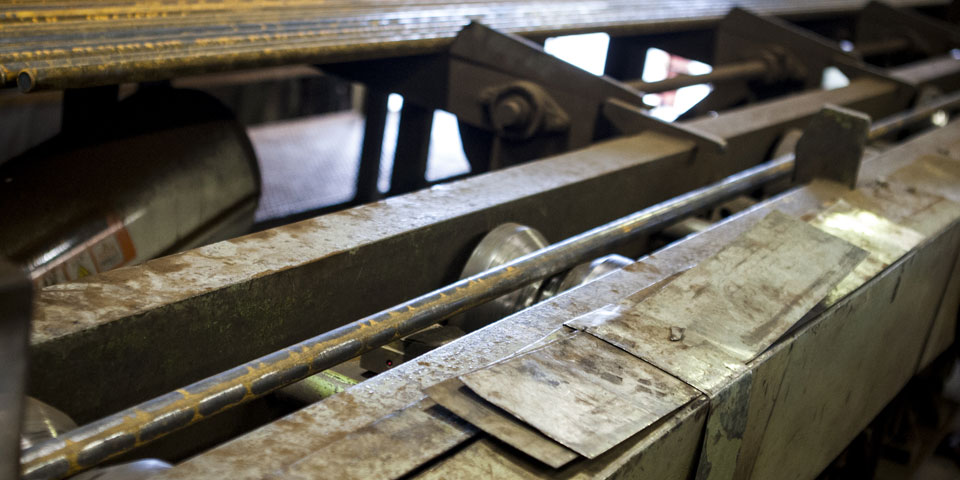
1. The six-meter steel rod are cut into 10in length by laser.

2. Each Billet is heated to 1200°C, before being stretched and bent to the angle that will roughly form the head and hosel. The process maintains those natural grain lines in the steel.
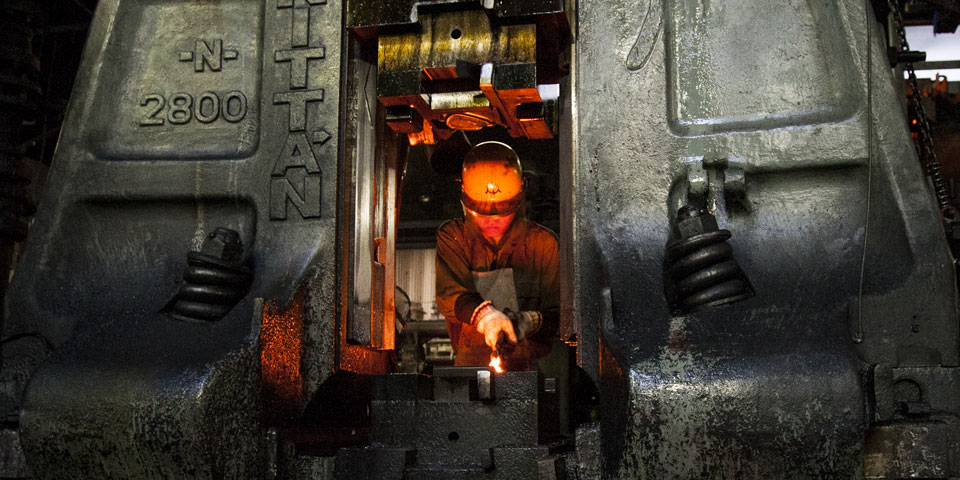
3. The bent billet is placed onto a forging mold where it is clobbered four times by a 1,000-ton hammer press. This process aligns the grains in the metal and avoids microscopic air bubbles that can form during typical casting processes.

4. After the first of two forging, a machine like a cookie cutter roughly trims off the excess metal, known as the flash.
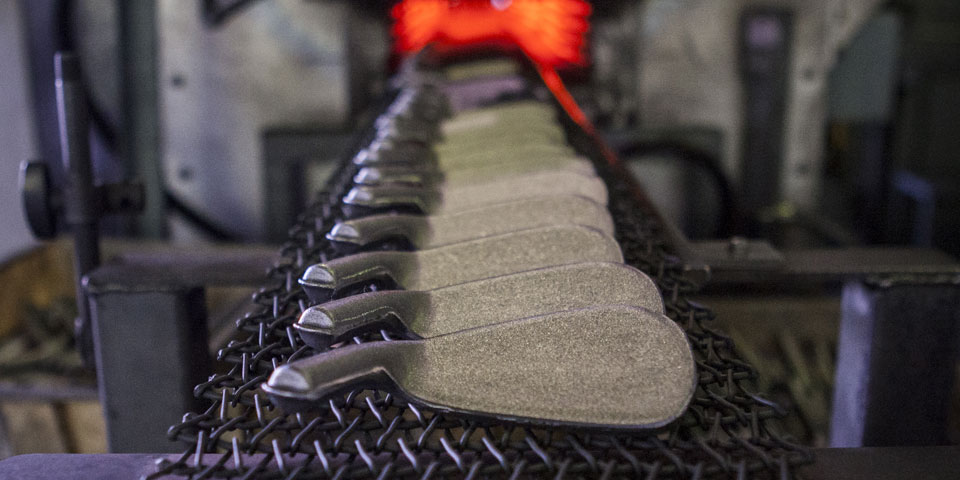
5. Each clubhead is reheated and placed into a second mold and squeezed under pressure to create the ideal golf club shape. The clubhead is trimmed a second time
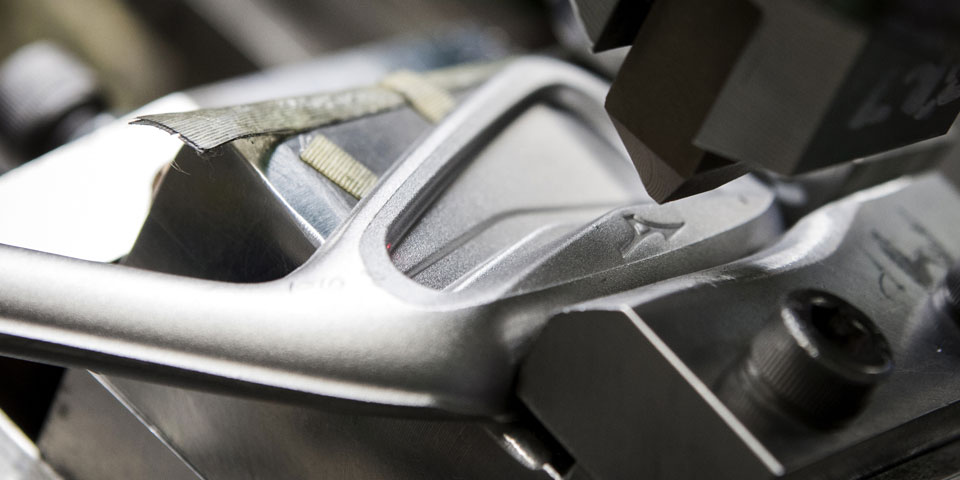
6. Each head is shot-blasted clean before being stamped with the appropriate Mizuno markings, and minutely inspected. Finally, the head is forged, and ready for grinding.

3. Finishing
At Mizuno Technics we make the final refinements. Grinding is done by hand, and 30 pairs of hands and eyes ensure each forged iron's quality.
Mizuno Technics finish the forged heads arriving from Chuo, by taking over the process such as club refinement, assembly and customizing. This makes the Mizuno Technics the place where the Mizuno brand's values of technology, quality and individualism align. The factoty builds 2,000 clubs every day.


1. Drill out a hole in the hosel for the shaft. The head then is given just a rough grinding as the heads are yet to be adjusted for loft and lie, which can cause scratching.
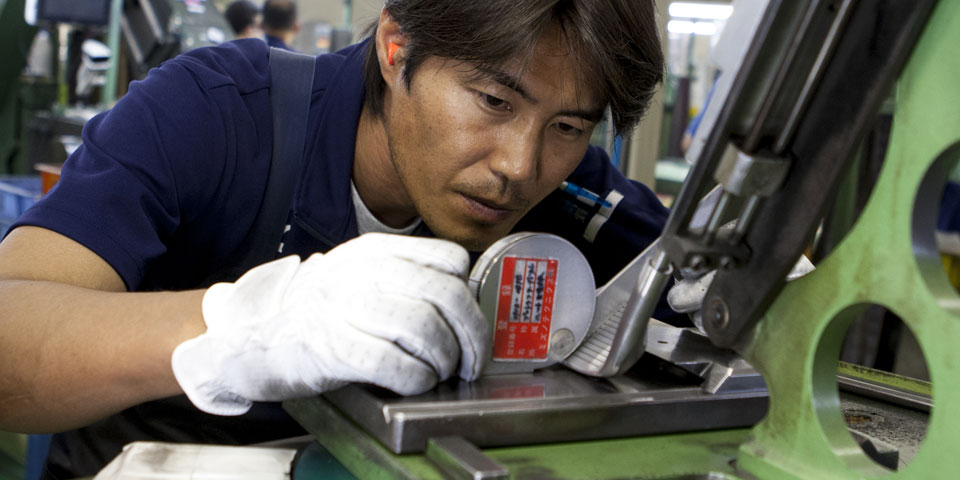
2. An engineer carries out a loft and lie check. He secures the head in a vice and blend the hosel with a tool, while watching the result on a computer monitor. The iron is adjusted to 0.25 of a degree.
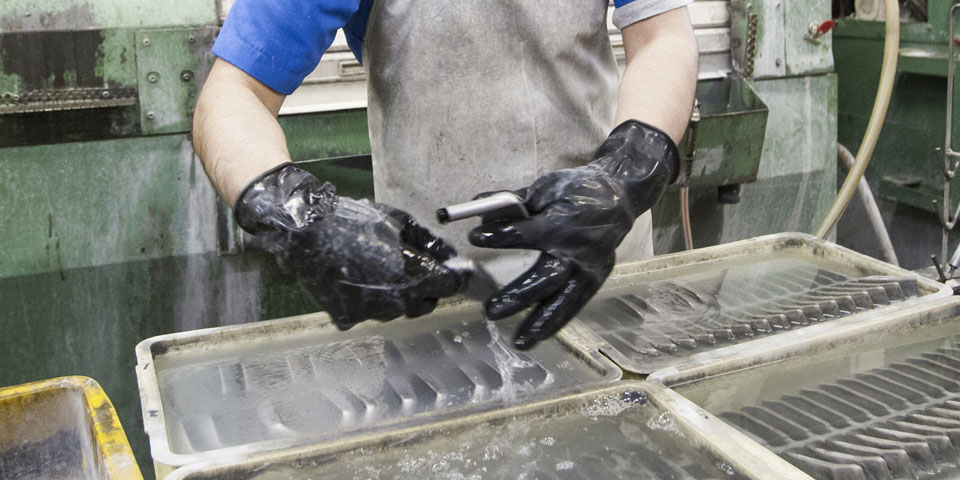
3. The clubheads are given the After Barrel Process - basically a treatment of the club by hundreds of thousands of tiny, angle stone in water. The process takes two hour.

4. The head, now smooth and clean in matt silver, has its face milled, and then any custom-engraving is added before the grooves are etched in by laser.
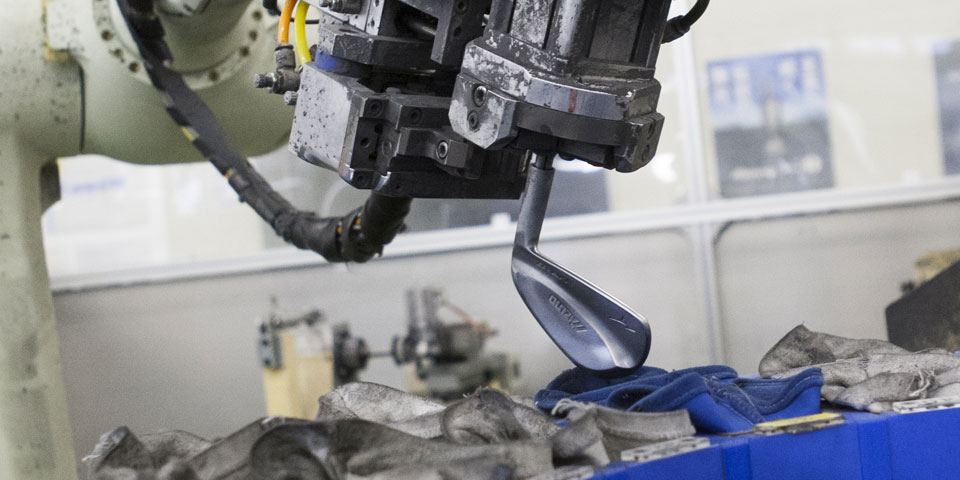
5. The clubheads are now polished, the only machine-based part of the process. A robot picks up each head and applies it to three different grades of buffing cloth.

6. The heads are plated and painted in any blend of 11 colors available for custom order. The finished head is shafted and gripped. Lofts and lies are given a second check. Finally the clubs are boxed, ready for dispatch.
Luke Donald and Mizuno

At Mizuno Technics
When did you start playing Mizuno clubs?
I've been using Mizuno clubs for a number of years, since I was about 13 or 14 years of age. Growing up, one of my idols was Nick Faldo, he was a big player for Mizuno, he won many tournaments and many majors using Mizuno equipment and I think he was always known as one of the best iron players in the game. Mizuno has always been synonymous with having the best irons in the game, and I've always loved the equipment loved how they feel, loved how they look and have always loved playing Mizuno equipment.

Discussing wedge sole grinding with Mizuno Craftsman, Tomo Ito
What do you look for in Mizuno irons?
For me it's always very important to feel comfortable in the golf course, when you look at the club, when it's behind the golf ball, when it needs to look great. I love the lines that the Mizuno clubs have but also more importantly is how it feels, how the blade goes through the ground, the strike, whether there's any vibration in the shaft and the club head. For me I've always been able to feel so much solid contact with Mizuno irons I'm able to control it, work the ball both ways, I love the fact that Mizuno technology gives me that control that I've been known for in my career so it's a mixture of look and feel, and I think Mizuno always get it just right.

